As the RHS Chelsea Flower Show finishes for another year, the Gardens Illustrated team have been discussing their favourite gardens. Here's our verdict – do you agree?
Don't miss the People's Choice Awards verdict, or the medals won by the gardens this year.
The New Blue Peter Garden – Discover Soil by Juliet Sargeant
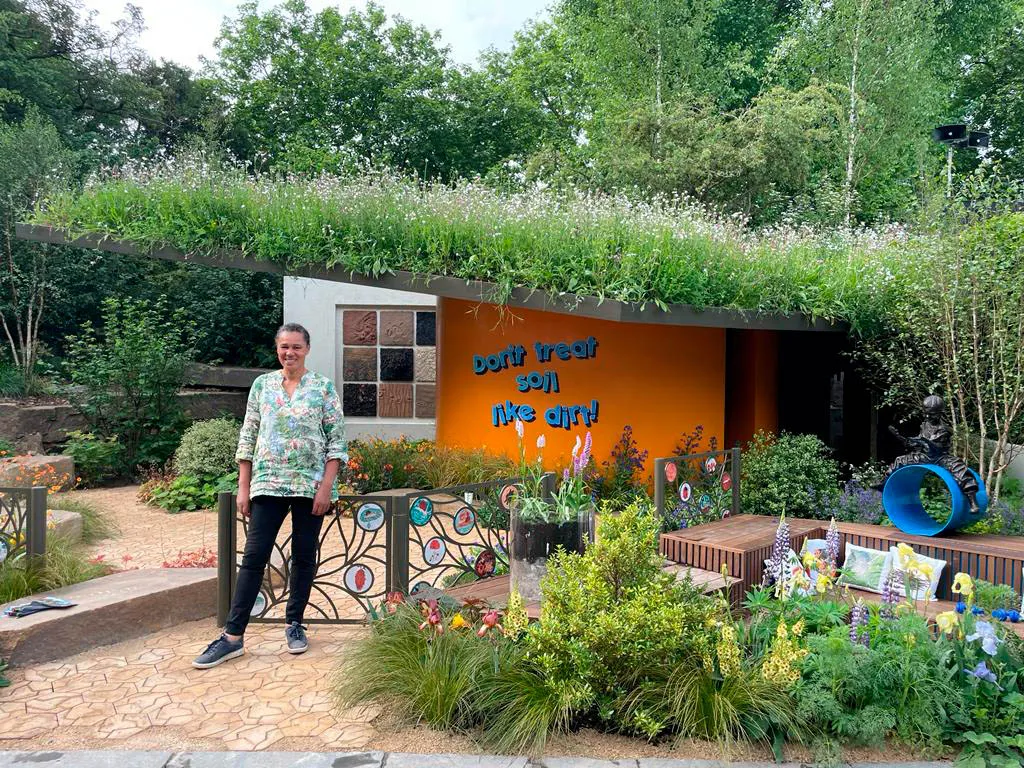
Chosen by Sorrel Everton, Deputy Editor
This year’s show has seen something of a shift change in attitude, due in part to Project Giving Back, so I’ve picked out just one example that highlights the ethos of the project – Juliet Sargeant’s Discover Soil garden. Perhaps not a garden as such, but as a thought-provoking exhibit, this worked hard and is a perfect example of the purpose behind Project Giving Back, in which a show garden is sponsored to go on to fulfil a beneficial purpose beyond its brief appearance at Chelsea.
Juliet has thought about how to dig the dirt when it comes to teaching children about the importance of soil and our increasing awareness of its complexities and vitality. From a chill-out area to tune in to the sounds of compost activity to artworks that highlight the textures of different soils, to finding out how soil is formed and the influences of weather and environment, it’s all here as the basis for discovery.
As the new garden for the long-running BBC children’s programme Blue Peter, the show garden will be moving to its permanent home at RHS Garden Bridgewater – and it will work much better there as an interactive, educational space for children to engage with the story of what soil is. Tantalising glimpses too of the wildflower meadow, which at Chelsea were on the roof of Juliet’s observation chamber along with an impressive tree, will hopefully be more accessible to children, with perhaps an actual subterranean chamber that takes children underground.
This is one to watch as it settles into its new home, and Juliet’s energies into making learning relevant should ensure that we ‘don’t treat soil like dirt’.
If you’re looking for ways to make your own garden more environmentally sound, Juliet will be hosting our third online masterclass on 14 July on ‘How to design a sustainable garden’. Find out more about our Garden Masterclasses for 2022.
MEDITE SMARTPLY Building the Future by Sarah Eberle

Chosen by Jodie Jones, Contributing Editor
‘You might as well go large or go home,’ Sarah Eberle told me when I interviewed her in the run up to Chelsea, and designing a garden around a huge waterfall made out of sustainable timber construction panels could have been decidedly risky. Except that Sarah has won more Chelsea Gold medals than any other garden designer and she knows exactly what she is doing. I was expecting her to pull it off in high style, and that is exactly what she did, with a bold design and exceptional planting which played with texture more than colour. Her vision was expertly realised by Chelsea veteran contractors Landform Consultants, but the plants were the star of this show garden. From a graceful Picea omorika and exotic Schefflera taiwaniana to the highly textured underplanting featuring curly wood sage (Teucrium scorodonia ‘Crispum’) and other tiny treats, this was my favourite garden at a show with a lot of strong contenders.
The Plantman's Ice Garden by John Warland
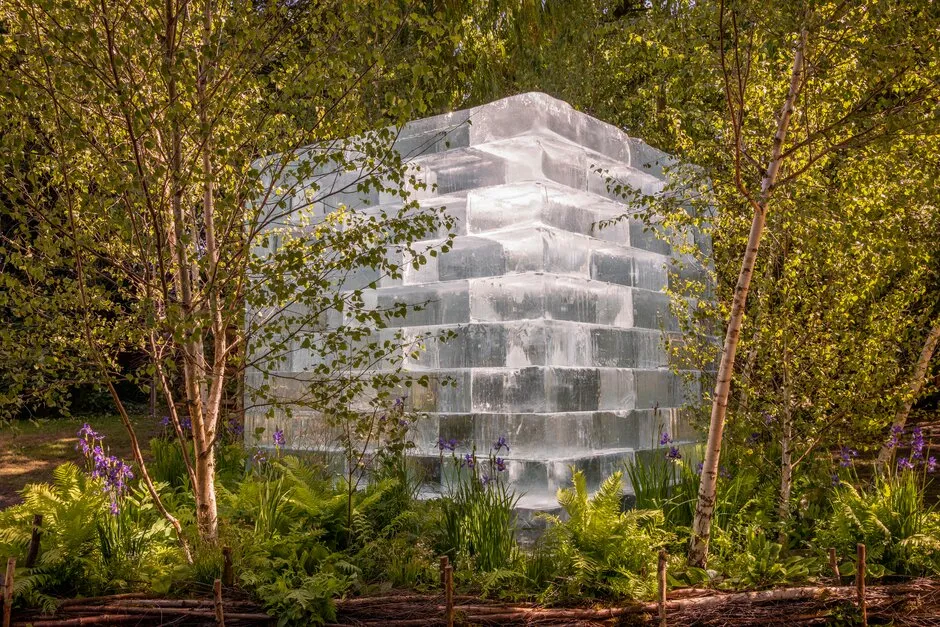
Chosen by David Grenham, Art Director
Chelsea 2022 is full of sumptuous wild planting, from the large show gardens on Main Avenue through to the Sanctuary gardens. My highlights include A Rewilding Britain Landscape, A Textile Garden for Fashion Revolution and my favourite, The Plantsman’s Ice Garden. The visual effect of the wonderful planting framing the ice block, which can be heard cracking in the heat, is powerful and thoughtful. The fact that the ice block may have melted away by the weekend accentuates the clear message of how global warming is changing our planet at an alarming rate.
A Garden Sanctuary by Hamptons by Tony Woods
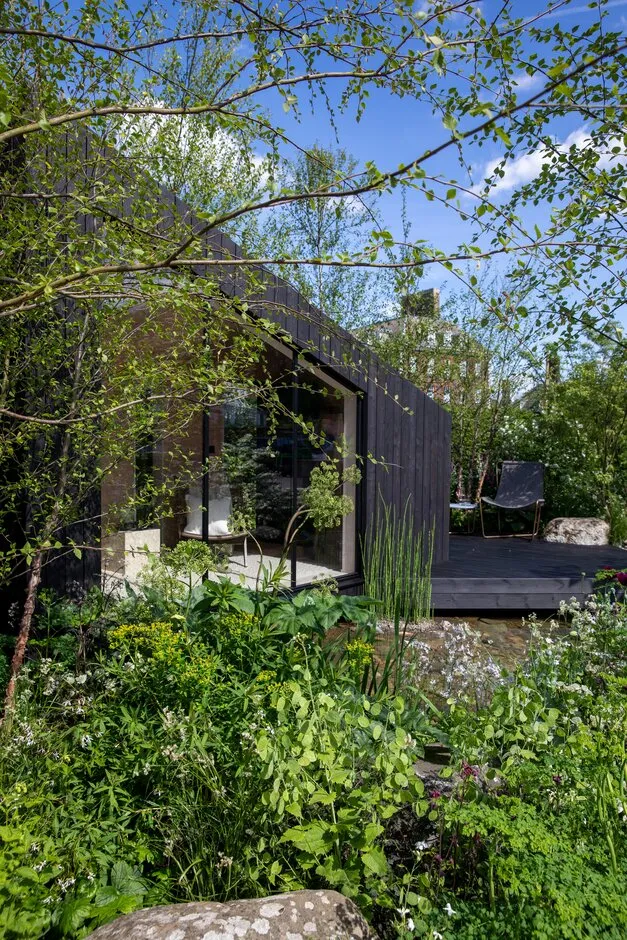
Chosen by Niki Goss, Deputy Art Editor
I loved Urban Flow, Tony’s debut Chelsea garden in 2018, and he’s back with another standout offering in 2022. I’m a sucker for a bit of burnt-larch cladding, so was immediately drawn to the inviting garden retreat in this garden. The jaunty angular cabin is beautifully offset by the soft, clever planting that surrounds it: a palette of mainly greens and whites, including a flowering multi-stemmed Cornus kousa, green honesty seed pods and Angelica archangelica, with accents of deep purple and black from Aquilegia vulgaris ‘Black Barlow, Anthriscus sylvestris ‘Ravenswing’ and Baptisia ‘Indigo Spires’ popping through to tie it all back to the darkness of the charred timber. Add in the subtle babbling sounds of the water and it’s simply a recipe for tranquility. Every time I looked I noticed another detail, something to make one truly immersed in one’s surroundings and to pause and just be, which to me epitomises what a Sanctuary garden should be about.
Morris & Co. by Ruth Willmott
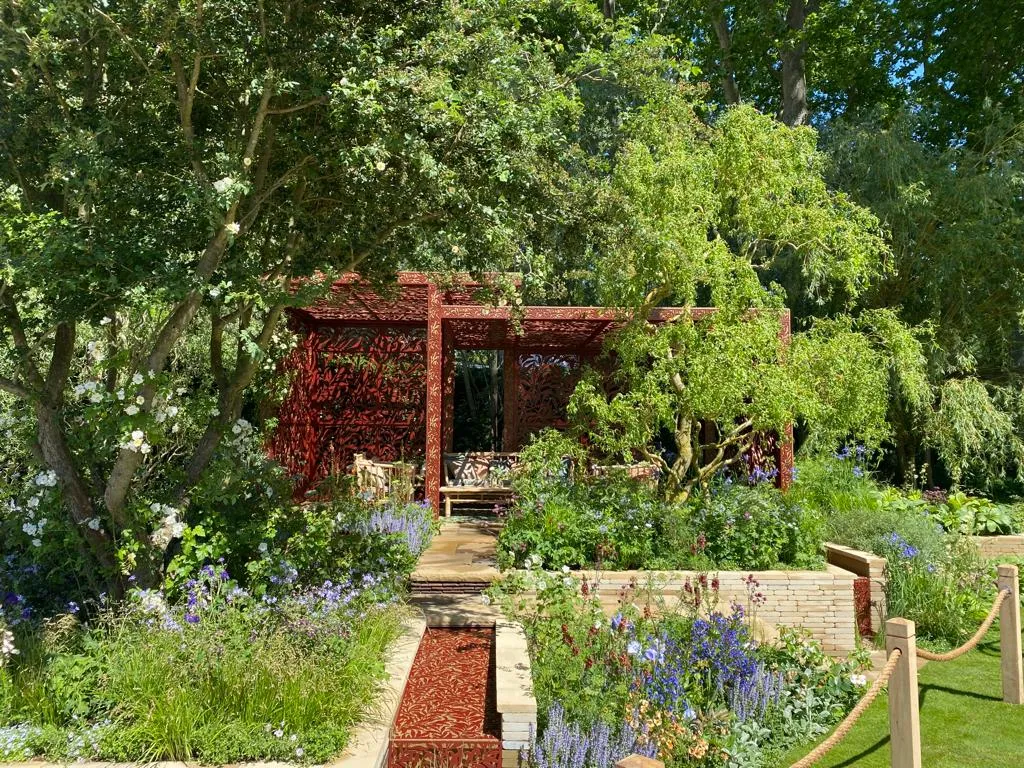
Chosen by Daisy Bowie-Sell, Digital Editor
Not only did the Morris & Co. garden appeal to my love of history and literature – William Morris's philosophies and novels have been constant companions throughout my life – it also appealed to my senses. Bright swathes of colour made the pollinators buzz. The metal pavilion at the centre of the garden, featuring one of Morris’ most iconic designs, worked beautifully alongside Ruth Willmott’s planting – set in a layout edged by water and also inspired by a Morris design. The great man once said 'Have nothing in your houses that you do not know to be useful, or believe to be beautiful' (I think it’s fair to assume he’d have meant garden, too) and this garden encapsulated that: useful as a resting space for the mind, for the bees, birds and butterflies and wonderfully beautiful, too.
Hands off Mangrove by Grow2Know
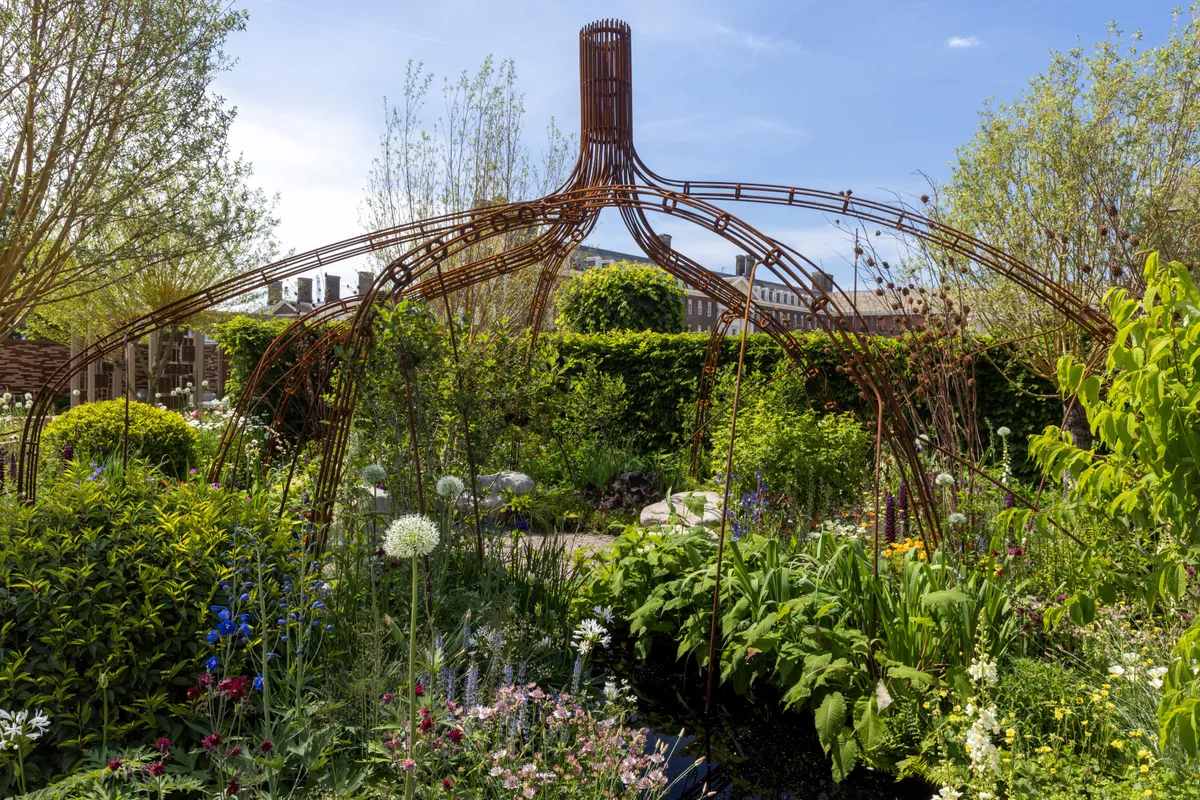
Chosen by Veronica Peerless, Commissioning Content Editor
They say that you only have a few seconds to ‘read’ a Chelsea garden and I had an immediate reaction to quite a few this year, including Tony Wood's A Garden Sanctuary by Hamptons, Ruth's Willmott's Morris & Co., The Place2Be Securing Tomorrow garden and Taina Suonio's Connected, by Exante. But the garden that put an instant smile on my face was Grow2Know’s Hands off Mangrove.
Despite conveying several serious and important messages, this garden was joyful, not least thanks to its smiley and laid back designers Tayshan Hayden-Smith and Danny Clarke – who, as Danny pointed out, had never designed so much as a garden fete before. The planting by Humaira Ikram was confident and exuberant and the hard landscaping (sculpture aside) was minimal. The garden was the place to be on Press Day, with a steel band, schoolchildren and a flood of notable visitors totally stealing the show.
Within a flower show and industry that is still overwhelmingly white, this garden was a triumph and a breath of fresh air. As BBC Gardeners’ World presenter and gardener Flo Headlam said on Instagram: “These guys have arrived and they’re slaying it.” Tayshan has just been made an RHS Ambassador, so he will now be working within the RHS to create more access to nature and make gardening more inclusive.
The garden may also have turned out to be a beacon for biodiversity. When caterpillars started eating the hornbeam hedges at the back of the garden, threatening the Chelsea perfection that the judges expect, the team left blue tits to feast on them – accepting that the leaves might have holes in them. Which raises an important question: with climate change and biodiversity at the forefront of the gardening agenda, does a Chelsea garden still have to be perfect?
The Cirrus Garden
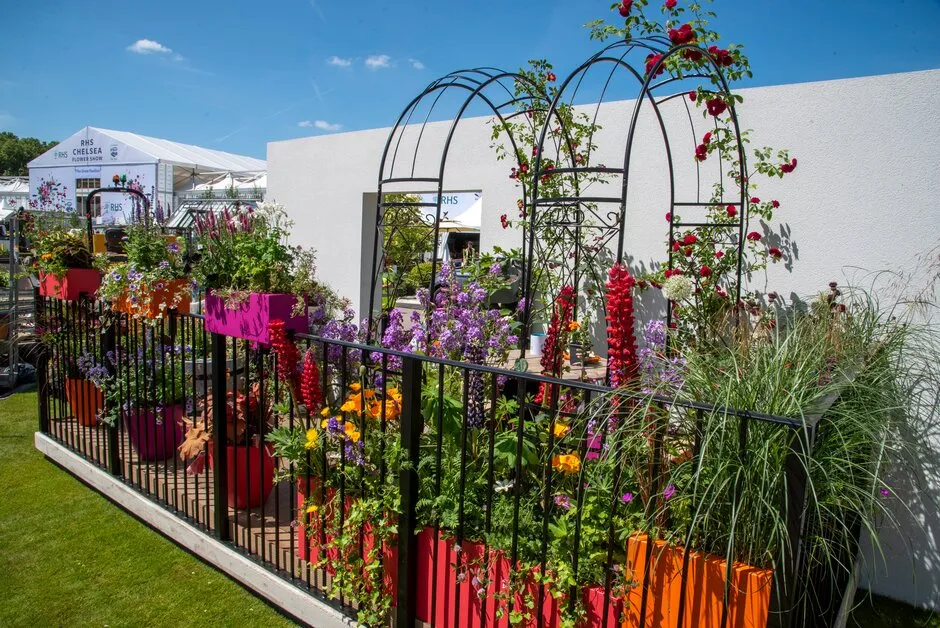
Chosen by Molly Blair, Editorial and Digital Assistant
Being a pot-bound gardener myself, I was drawn to the container and balcony gardens at this year’s Chelsea straight away. Although there were plenty that caught my attention – A Mediterranean Reflection looked stunning in the sunshine on Sunday morning and the Wild Kitchen Garden drew me in with its galvanised metal planters – it was the Cirrus Garden that really stood out for me.
The consideration that the designer, Jason Williams (@cloudgardeneruk), had put into the altitude of the Cirrus Garden was really inspiring and left me desperate to get back to my roof terrace and start planting. The garden showed a great balance between ornamentals and edibles and the whole thing was alive with pollinators. One detail I particularly liked was two climbing red roses underplanted with red pak choi.
Having a chat with Jason while the finishing touches were being made on Sunday, he told us about some of the challenges that come with gardening on a balcony and how he’s had to adapt. For example, he likes to use pots with fewer drainage holes (or none at all!), as the sun and wind can dry the soil and plants out really quickly. He doesn’t use terracotta pots as they dry out too fast, and avoids dark containers, as they absorb heat and dry out compost. The Cirrus Garden was the perfect example of what can be achieved in a small space as a renter.